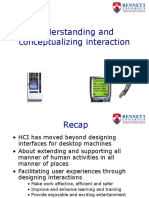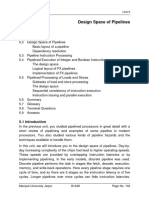0% found this document useful (0 votes)
9 views43 pagesLecture 6
The document outlines concepts related to designing human-computer interaction (HCI), focusing on understanding the problem space, assumptions, and claims in design. It emphasizes the importance of developing a conceptual model to inform design decisions and discusses various interaction types including instructing, conversing, manipulating, and exploring. Additionally, it introduces design metaphors in human-centered artificial intelligence (HCAI) that enhance user interaction and control.
Uploaded by
maksudaakterCopyright
© © All Rights Reserved
We take content rights seriously. If you suspect this is your content, claim it here.
Available Formats
Download as PDF, TXT or read online on Scribd
0% found this document useful (0 votes)
9 views43 pagesLecture 6
The document outlines concepts related to designing human-computer interaction (HCI), focusing on understanding the problem space, assumptions, and claims in design. It emphasizes the importance of developing a conceptual model to inform design decisions and discusses various interaction types including instructing, conversing, manipulating, and exploring. Additionally, it introduces design metaphors in human-centered artificial intelligence (HCAI) that enhance user interaction and control.
Uploaded by
maksudaakterCopyright
© © All Rights Reserved
We take content rights seriously. If you suspect this is your content, claim it here.
Available Formats
Download as PDF, TXT or read online on Scribd
/ 43
























































































